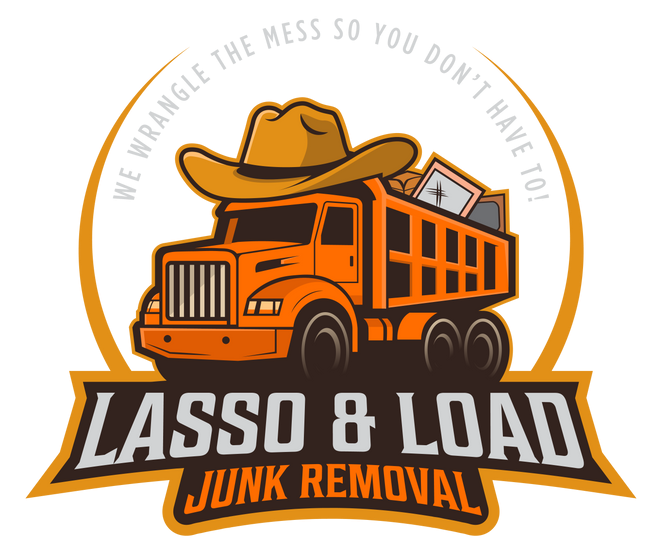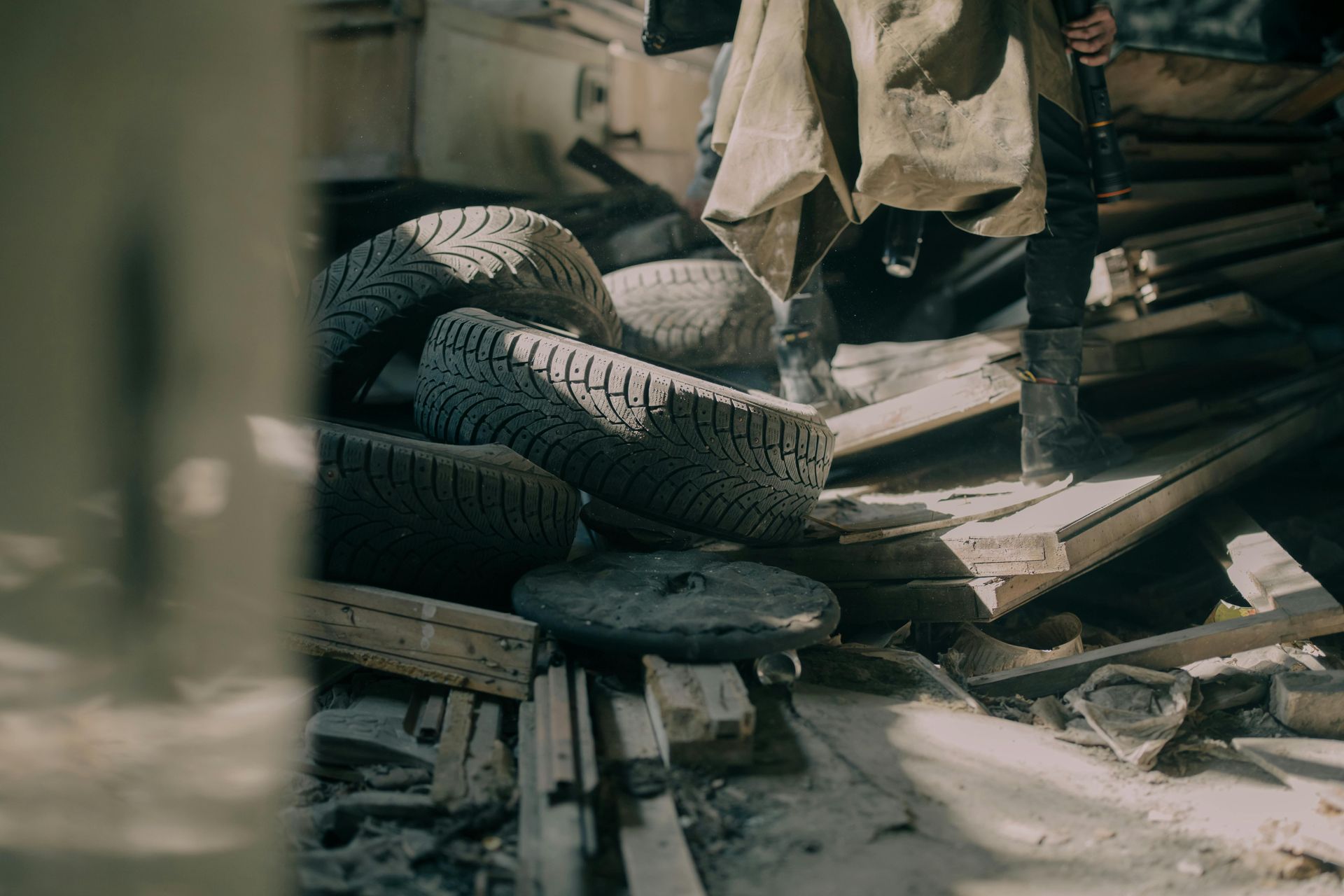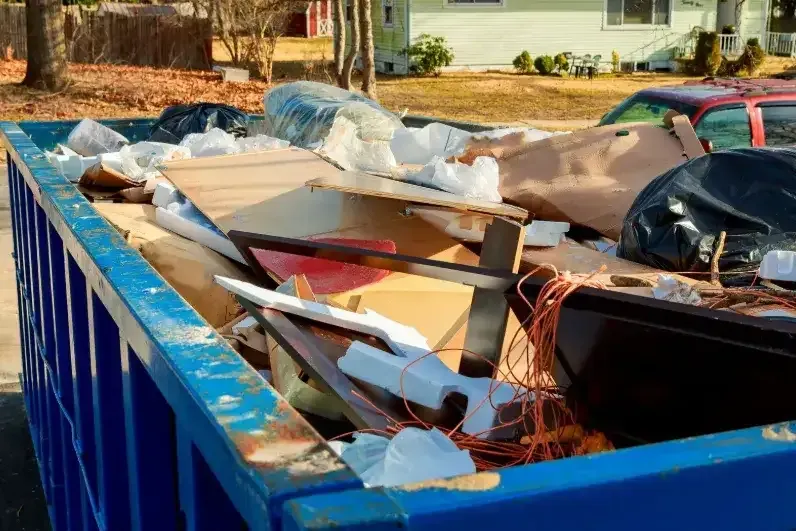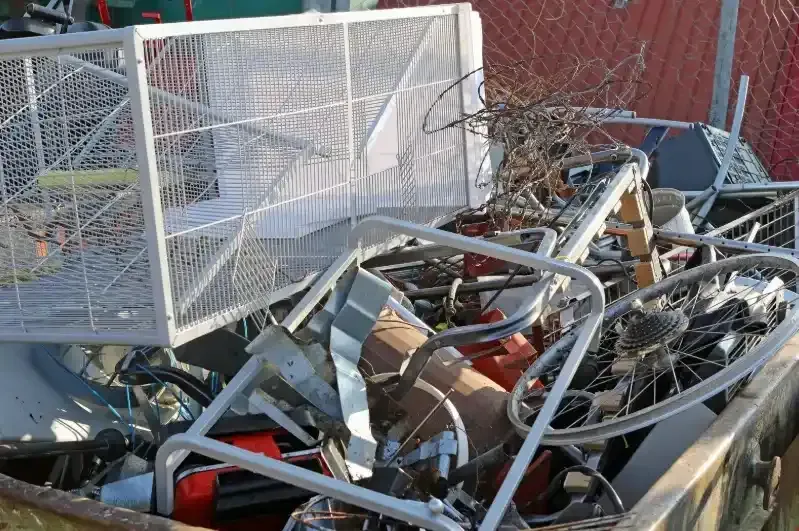Tips for Tackling Concrete Removal with Ease
Concrete removal can seem like a daunting task, especially for homeowners or contractors who are unfamiliar with the process. It often involves heavy lifting, noise, and the risk of injury if not done correctly. However, with the right approach, equipment, and safety measures, removing concrete from your property can be an efficient and manageable task. Whether you're demolishing a driveway, sidewalk, patio, or any other concrete structure, understanding the fundamentals of concrete removal is crucial for a smooth process.
From assessing the area to choosing the right tools, such as sledgehammers, jackhammers, and concrete saws, the first step is planning your project carefully. Proper preparation ensures that you have the right equipment on hand and that you can handle the debris disposal efficiently. With a clear strategy and by following the proper steps, you can take on concrete removal with confidence. These essential tips will help you approach the task in a way that minimizes effort, ensures safety, and maximizes effectiveness.
Assess the Area and Plan Your Approach
Before beginning concrete removal, assessing the area is a crucial first step. The size, thickness, and condition of the concrete will determine the methods, tools, and time required for the job. Are you dealing with a small, manageable slab in a garden, or are you tackling a large, reinforced driveway or foundation? Knowing the scope of your project will help you plan the removal process effectively. For smaller slabs, manual tools like a sledgehammer may suffice, but for larger, more reinforced concrete, you may need heavy-duty equipment like a jackhammer or concrete saw.
It’s important to consider the strength of the concrete as well. Some slabs may be brittle and easier to break, while others may be more robust and require more force. Planning ahead allows you to estimate the tools and time needed for the task. Also, deciding whether to tackle the project yourself or hire a professional should be based on the complexity of the concrete and your available resources.
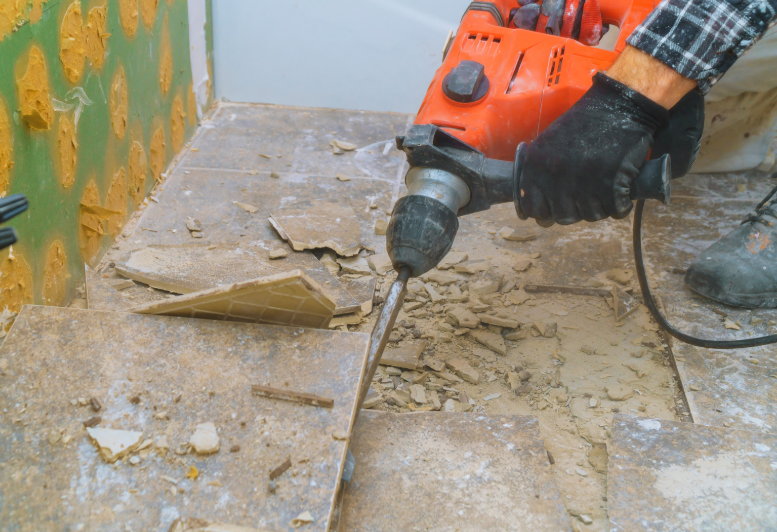
Gather the Right Tools and Equipment
Concrete removal requires specialized tools and equipment to ensure that the job is done safely and efficiently. Depending on the scale of your project, you may need:
- Sledgehammers or Jackhammers: These tools are essential for breaking up large concrete slabs. A sledgehammer is suitable for smaller areas, but a jackhammer is a more effective tool for larger or tougher slabs.
- Pry Bars: These are useful for prying up concrete pieces that are stuck to the ground or interlocked with rebar.
- Concrete Saw: For more precise cuts, a concrete saw will allow you to score or slice through the surface, making it easier to remove.
- Safety Gear: Always wear safety goggles, gloves, and heavy-duty boots to protect yourself from debris and accidents.
- Wheelbarrow or Dump Truck: Once you’ve broken up the concrete, you’ll need to transport it. A wheelbarrow works for smaller projects, while a dump truck or large dumpster may be needed for larger debris removal.
Having the right tools ensures the job goes smoothly and saves you time in the long run.
Remove Any Obstructions
Before starting the concrete removal process, clearing the area of obstructions is crucial for both safety and efficiency. Any furniture, plants, or outdoor decorations should be relocated to prevent damage from debris or flying particles. If your project is near delicate landscaping, consider protecting it with tarps or plastic sheeting to shield it from dust and debris that may accumulate during demolition. Concrete removal often generates significant mess, and this protective step will help minimize the risk to plants and flowers, especially if you’re working in a garden or lawn area.
Additionally, take special care if the concrete you’re removing is near any metal pipes, electrical wiring, or plumbing embedded within or beneath the surface. Use a concrete saw or other specialized tools to score the concrete around these sensitive areas to avoid damaging them. It’s also essential to check for underground utilities, as damaging them can be both costly and dangerous. If you are unsure of their location, contact your local utility company to mark any lines before you begin the demolition to avoid mishaps.
Break Up the Concrete in Sections
Breaking up the concrete efficiently involves working in manageable sections to avoid overwhelming yourself with large pieces. Start by scoring the surface with a concrete saw to create lines or cuts that will guide the demolition process. These cuts allow for more controlled breaking of the material, making it easier to handle and reducing the risk of uneven or haphazard breaking. Once the concrete is scored, begin breaking it into smaller pieces using a sledgehammer or a jackhammer.
It's important to start from the edges of the slab and work inward, as this helps to avoid damaging the areas that are harder to access. For larger surfaces like driveways or patios, focus on breaking the concrete into chunks that are small enough to move and dispose of easily. If you’re using manual tools like a sledgehammer, take regular breaks to avoid fatigue, as this can lead to inefficient work and potential injuries. For power tools, be sure to read and follow all safety instructions to maintain optimal performance and minimize risks.
Properly Dispose of the Concrete Debris
Concrete removal isn’t just about breaking up the material; it’s equally important to ensure proper disposal to prevent any environmental harm. Once you've completed the demolition, the next critical step is to handle the disposal of concrete debris responsibly. Concrete, being a heavy and durable material, can take up significant space in landfills if not properly disposed of. One of the most sustainable methods is recycling, which offers both environmental and economic benefits. Many concrete recycling facilities accept construction waste and can repurpose the material for a variety of other projects, including road construction, landscaping, or building foundations. By choosing to recycle, you are not only contributing to a cleaner environment but also helping reduce the need for new raw materials.
If recycling is not available in your area, renting a dumpster is a practical and efficient alternative. Be sure to choose a dumpster with a capacity suitable for the volume of concrete you've removed to avoid overfilling, which could lead to additional costs or delays. Additionally, always follow the local regulations regarding concrete disposal. Improper disposal can result in fines, penalties, or even environmental contamination. By ensuring proper disposal, you not only comply with the law but also contribute to protecting the environment and keeping your property in good standing.
Consider Professional Help for Larger Projects
While DIY concrete removal is possible for smaller projects, larger and more complex tasks typically require professional help. Concrete demolition on a bigger scale, such as removing a driveway, patio, or even a foundation, can be challenging and time-consuming. Professional concrete removal companies have specialized tools, equipment, and experience to handle significant jobs safely and efficiently. They also have the manpower needed to complete the job in a timely manner, ensuring minimal disruption to your property.
Additionally, professionals are well-versed in the safe handling and disposal of large quantities of concrete, which can be logistically tricky. Trying to tackle a large project without the proper tools and knowledge could lead to delays, damage, or potential safety hazards. Hiring experts can ultimately save you time, reduce the stress of managing a large-scale project, and ensure the job is done right. If your project involves removing extensive concrete surfaces, calling in the pros might be the best solution.
Take Precautions to Avoid Damage
When undertaking concrete removal, it’s crucial to take proper precautions to avoid causing damage to the surrounding area. Whether you’re working near a building, garden, or driveway, it’s important to be mindful of the impact that demolition can have on nearby structures. To prevent damage to areas like walls, foundations, or trees, use specialized tools such as a sledgehammer or jackhammer carefully.
Always work slowly and methodically when dealing with concrete close to sensitive areas to avoid causing cracks or structural damage. If you’re working outdoors, particularly near a garden or lawn, consider protecting plants and grass by laying down tarps or plastic sheeting to shield them from debris or dust. If you’re removing concrete from a patio or driveway near a fence or other landscaping features, be sure to create barriers to keep the demolition contained. Taking these precautions can help ensure that your removal process goes smoothly without affecting surrounding property or greenery.
Conclusion
Concrete removal may seem like a difficult task, but with the right tools, preparation, and safety precautions, it can be completed with ease. By breaking up the concrete in sections, using proper equipment, and disposing of the debris responsibly, you can tackle this project without hassle. Whether it's a small DIY job or a large-scale demolition, following the tips shared in this guide will help you approach the task confidently. If you find that the concrete removal project is too complex or too large for you to handle, don't hesitate to reach out to professionals who can take care of the heavy lifting. Professionals can ensure the job is done efficiently and correctly, keeping your property intact and avoiding unnecessary complications.
Proper concrete removal not only clears space for your next project but also ensures that your yard or property remains safe throughout the process. Lasso & Load Junk Removal in Gwinnett County offers expert services to help with all your concrete removal needs. For more information or to schedule a consultation, contact us today at 404-227-2017 or via email at Lauren.renwickk@gmail.com. We're here to assist with all your junk removal and demolition projects, ensuring the job is done right every time.
